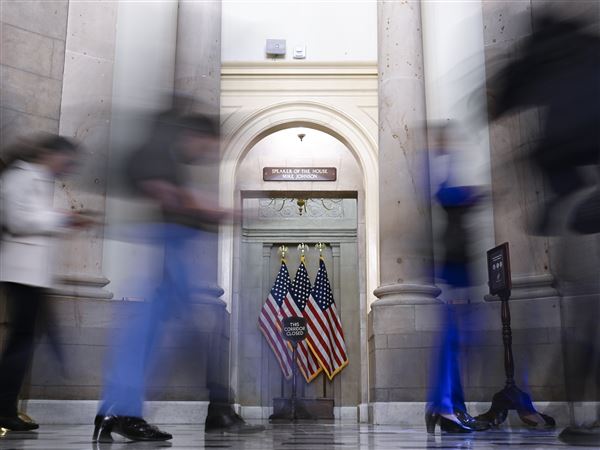Douglas C. Engelbart, a visionary scientist whose singular epiphany in 1950 about technology's potential to expand human intelligence led to a host of inventions -- among them the computer mouse -- that became the basis for both the Internet and the modern personal computer, died Tuesday at his home in Atherton, Calif. He was 88.
The cause was kidney failure, his wife, Karen O'Leary Engelbart, said.
Beginning in the 1950s, when computing was in its infancy, Mr. Engelbart set out to show that progress in science and engineering could be greatly accelerated if researchers, working in small groups, shared computing power. He called the approach "bootstrapping" and believed it would raise what he called their "collective IQ."
At the time, however, computers were room-size calculating machines that were not interactive and could be used by only a single person at a time.
Mr. Engelbart's insight came just two days after he was engaged to be married in December 1950. He had a good job working at a government aerospace laboratory in California, and he was pondering what he might do of value with the rest of his life.
Then it came to him. In a single stroke he had what might be called a complete vision of the information age. He saw himself sitting in front of a large computer screen full of different symbols, a vision most likely derived from his work on radar consoles while in the Navy after World War II. The screen, he thought, would serve as a display for a workstation that would organize all the information and communications for a given project.
A decade later, during the Vietnam War, he established an experimental research group at Stanford Research International (later renamed SRI International) with financing from the Advanced Research Projects Agency, the Air Force and NASA. At the time, computing industry professionals regarded Mr. Engelbart largely as a quixotic outsider.
In December 1968, however, he set the computing world on fire with a remarkable demonstration before more than a thousand of the world's leading computer scientists at the Fall Joint Computer Conference in San Francisco. At the time, the only way those and other scientists interacted with computers, the mainframe machines of their day, was by submitting stacks of punch cards to them and waiting hours for a printout of answers.
But Mr. Engelbart had been developing a variety of revolutionary interactive computer technologies at his Augmentation Research Center, and he had chosen the conference as the place in which to reveal them.
For the event he sat on stage in front of a mouse, a keyboard and other controls and projected the computer display on a 22-foot-high video screen behind him. In little more than an hour, he showed how a networked, interactive computing system would allow information to be shared rapidly among collaborating scientists. He demonstrated how a mouse, which he had invented just four years earlier, could be used to control a computer. He demonstrated text editing, video conferencing, hypertext and windowing.
In contrast to the mainframes then in use, Mr. Engelbart had created a computerized system he called the "oNLine System" or NLS, which allowed researchers to share information seamlessly and to create and retrieve documents in the form of a structured electronic library.
The event had a lasting impact, and years later people in Silicon Valley still referred to it as "the mother of all demos." Eventually the technology Mr. Engelbart demonstrated would be refined at Xerox's Palo Alto Research Center and at the Stanford Artificial Intelligence Laboratory and then be transformed for commercial use by Apple and Microsoft in the 1980s.
At least at first, it was the mouse that made the biggest impression on the computer industry.
The idea of a pointing device that rolled on the desk first occurred to Mr. Engelbart in 1964 while he was attending a computer graphics conference. He was musing about how to move a cursor -- initially referred to as a "bug" -- on a computer display.
When he returned to work, he gave a copy of a sketch to William English, a collaborator and mechanical engineer at SRI, who with the aid of a draftsman fashioned a pine case to hold the mechanical contents.
The first mouse had three buttons, because that was all the case could accommodate, even though Mr. Engelbart felt that as many as 10 buttons would be more useful. (Two decades later, Steve Jobs, when adding the mouse to the Macintosh computer, decided that a single button was appropriate. The Macintosh designers believed in radical simplicity, and Jobs, who died in 2011, argued that with a single button it was impossible to push the wrong one.)
The importance of Mr. Engelbart's networking ideas would be underscored when, in 1969, his Augment NLS system became the application for which the ARPAnet computer network -- the forerunner of the modern Internet -- was created.
Douglas Carl Engelbart was born in Portland, Ore., on Jan. 25, 1925, to Carl and Gladys Engelbart. He spent his formative years on a farm in suburban Portland and, after graduating from high school in 1942, attended Oregon State College. Toward the end of World War II he was drafted and spent two years in the Philippines as a radar technician.
It was in a reading library on a small island that he discovered an article titled "As We May Think" by the physicist Vannevar Bush, which described a universal information retrieval system called Memex. The idea stuck with Mr. Engelbart, and he made it his life's work.
After the war, he returned to Oregon State and was then hired to work at Ames Research Center, a government aerospace laboratory in California run by the National Advisory Committee on Aeronautics, NASA's forerunner. While there, working as an electronics technician, he observed how aerospace engineers started with small models of their designs and then scaled them up to full-size airplanes.
The idea of scaling remained with him, and after getting his Ph.D. at the University of California, Berkeley.


















